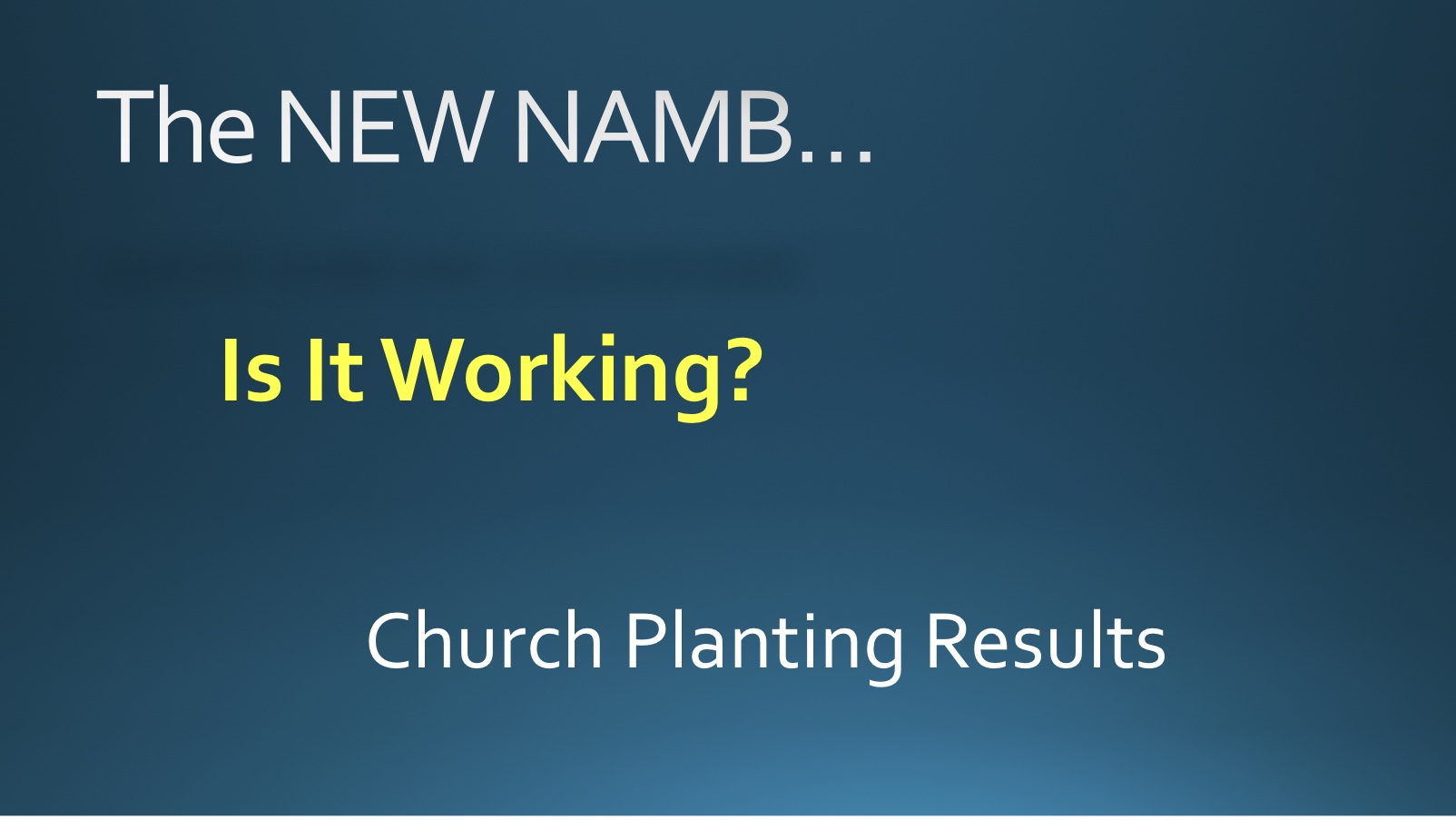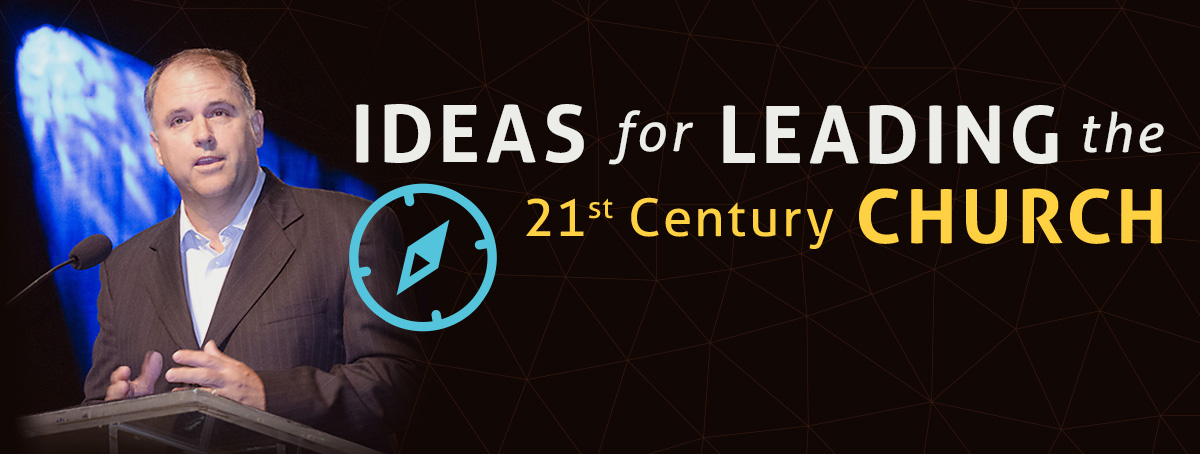At the 2016 SBC Annual Meeting, when Dr. Kevin Ezell presented a report from the North American Mission Board entitled It’s Working, he was referring to the implementation of NAMB’s new strategy over the past six years. However, his version of the storyline does not match the facts. Is It Working? The answer to this question is a resounding “no”. The baptism data supports such a conclusion. Baptisms per church have declined 18.7% during Ezell’s six year tenure.
Purpose of NAMB
Evangelism is the major purpose for NAMB. Church planting is now the primary chosen strategy to accomplish this purpose. According to Ezell, “NAMB’s primary reason for existence is to help Southern Baptists reach North America for Christ. That is the mission that runs through everything that we do.” (It’s Working, June 15, 2016) Evangelistic strategies should be driving the New NAMB and the results seen in baptisms. Planting new churches is not the ultimate mission—helping churches to be more effective in evangelism is the mission.

Key stats
While Southern Baptists are reporting 70 year lows in baptisms, any evaluation of results must consider the evangelistic effectiveness of the New NAMB and compare it with that of the Former NAMB. Every typically reported statistic is worse the last six years compared to the previous six years when NAMB had a diverse approach to evangelism, a healthy budget and national staff focused on evangelism, were jointly funding state evangelism staff members, and had the entire North America in their view. Three statistics of note among many others reveal the real status of our evangelism effectiveness. From 2009 to 2015 Annual Church Profile…
- SBC Total Baptisms have an average decline of 45,289 per year during the New NAMB and that number is growing each year
- SBC Baptisms have declined by 13% during the New NAMB
- Including all 47,000+ churches, the average decline in baptisms of 18.7% per church
NAMB is not solely responsible for the evangelistic results of the SBC. However, we should thoroughly examine these results in light of the complete dismantling of their evangelism staff, and in light of their complete rejection of our historic approaches to evangelism. In lieu of these time-honored ministries, the New NAMB has adopted church planting as virtually the only approach to “help Southern Baptists reach North America.”
New NAMB Actions Crippling Evangelism
We have already seen that baptisms are in a steady and significant decline in the SBC under the direction of the NEW NAMB. Any serious exploration into the possible causes requires an investigation into the specific measures taken by NAMB over the past six years which may have contributed to these steep declines in baptisms. In stark contrast to the approach taken by the Former NAMB, the NEW NAMB took the following specific actions that significantly weakened SBC evangelism.
- Massive National Force Reduction
The New NAMB terminated some 37% staff members at the national headquarters within months of Dr. Ezell’s employment, including virtually all of the evangelism staff who focused on leading, training, and engagement on the ground in evangelism. - Massive Budget Cuts in Evangelism
The New NAMB reduced the funds committed to evangelism from $20.6 million to $6.3 million. Today, out of the 2017 $76 million annual church planting budget, NAMB is spending $12 million to purchase homes for church planters while only budgeting $6.34 million for evangelism. Additionally, the six-year housing purchase project will spend $62 million in total for housing for planters. - Church Planting Tunnel Vision
The New NAMB is focused almost exclusively on 4,000 church plants in 32 cities while under-resourcing the 43,000 existing SBC churches in evangelism who have the missionary force and funding inside their walls, along with an established presence. - Massive State Evangelism Defunding
In 2014, the New NAMB revised the 2012 Strategic Partnership Agreement (SPA) by defunding all evangelism staff positions jointly funded by NAMB for decades in the 25 non-Southern state conventions. These positions included State Directors of Evangelism, other state evangelism staff, and the Baptist Collegiate Ministries staff evangelizing American and International students on college campuses.
Let’s evaluate the cumulative impact upon evangelism of the four catastrophic initiatives mentioned above. The New NAMB strategy has (a) practically eliminated its entire evangelism division, (b) slashed its evangelism budget by nearly 70%, (c) narrowed its focus to 8.5%of our churches and 0.2% of our cities, and (d) abandoned its historic commitment to assist sparsely populated state conventions with the resources necessary to employ evangelistic staff. Does it not stand to reason that evangelism in the SBC was bound to suffer as a direct result of these New NAMB initiatives? This summary of the New NAMB strategy crippling evangelism raises important questions.
Appraising the New NAMB Rationale and Comparisons
Southern Baptists were told that church planting would become the primary focus of the New NAMB because it is the most effective evangelism strategy. Early NAMB press releases indicated that church plants were three to four times more effective in evangelism than established churches. This information was remarkably false and misleading, yet it was used to justify the radical changes made by the New NAMB and continues to be shared by our NAMB President in his claim that “it is working”.
There are two legitimate methods to compare the baptism ratios of church plants to existing churches based on either average worship attendance or average small group participation, and based on these approaches the evangelistic differences between new and existing churches is small. To compare new to existing churches based on membership is inexcusable. Also of note, current SBC church plants are dramatically less evangelistically effective than the churches studied by NAMB in 2007.
Southern Baptists were sold an evangelism dismantling strategy for a focus exclusively on church planting that was based on statistical ignorance or guile. Southern Baptists were and are being misled. Dr. Ezell’s 1:14 ratio for plants to 1:52 ratio for existing churches based on membership may be statistically accurate, but completely faulty and misleading. Baptism in all churches is 1:18.8 based on the infinitely more telling average attendance.
Additional Strategic Evangelism Pitfalls
1. Discussed Church Probation Policy
Instead of expressing concern, proposing possible aids or assuming some measure of responsibility for the declining baptism rates, Dr. Ezell communicated in at least two public settings his belief “that if you don’t baptize no one in two years, we should put them on probation and eventually kick them out.” He stated those churches were “bad advertisement” instead of helping to equip the pastors who fund NAMB in evangelism.
2. Exclusive Focus on Unreceptive Areas
The New NAMB strategy is focused on reaching people groups that are hardest to reach, located in the most unreached areas, and comprised of the people most unreceptive to the gospel. We are often sending in planters with little experience in ministry or demonstrated cross-cultural giftings or fruitful ministry. Meanwhile, we are practically abandoning the places and people who were being reached with the missionaries and methods previously utilized.
3. Heavily Investing in Isolated Urban Ministry
The New NAMB invested all evangelism resources into church planting among the largest unchurched cities to the exclusion of virtually all other approaches to impacting lostness in North America. The New NAMB destablized local and state support systems by defunding and pulling the requirement that church plants receiving SBC funds reinvest into local associations. Often church planters are moved into mission contexts that are both radically different than their own without proven cross-cultural ministry effectiveness or equipping for cross-cultural minsitry.
4. Dismantling Four Layers of SBC Cooperation
History reveals that Southern Baptists accomplish more when we work together from the national, state, association and local church levels—not when a national organization picks a strategy for the day and forces it upon state conventions, associations, and local churches. The New NAMB leaders are making decisions leading to or hastening the dismantling of the ecosystem of SBC life. As mentioned above the New NAMB has defunded and removed the historic requirement of planters to reinvest in their association, and moved to a more nationalistic approach in the 2014 version of the Strategic Partnership Agreements with the state conventions.
Conclusion
SBC baptisms have been on a steady decline for sixteen full years—marking the first time in SBC history that we have ever observed such a slide. Southern Baptists need the cart and the horse, but the New NAMB strategy has put the cart before the horse. Evangelism must be the leading edge, not the trailing edge operating on leftover human and financial resources. The New NAMB has become more effective in public relations and less effective in evangelism. The cold hard facts reveal that Southern Baptists are doing a historically poor job of evangelizing North America. We are not in need of a spin zone, but a reality check and a different strategic direction. It is not working.
